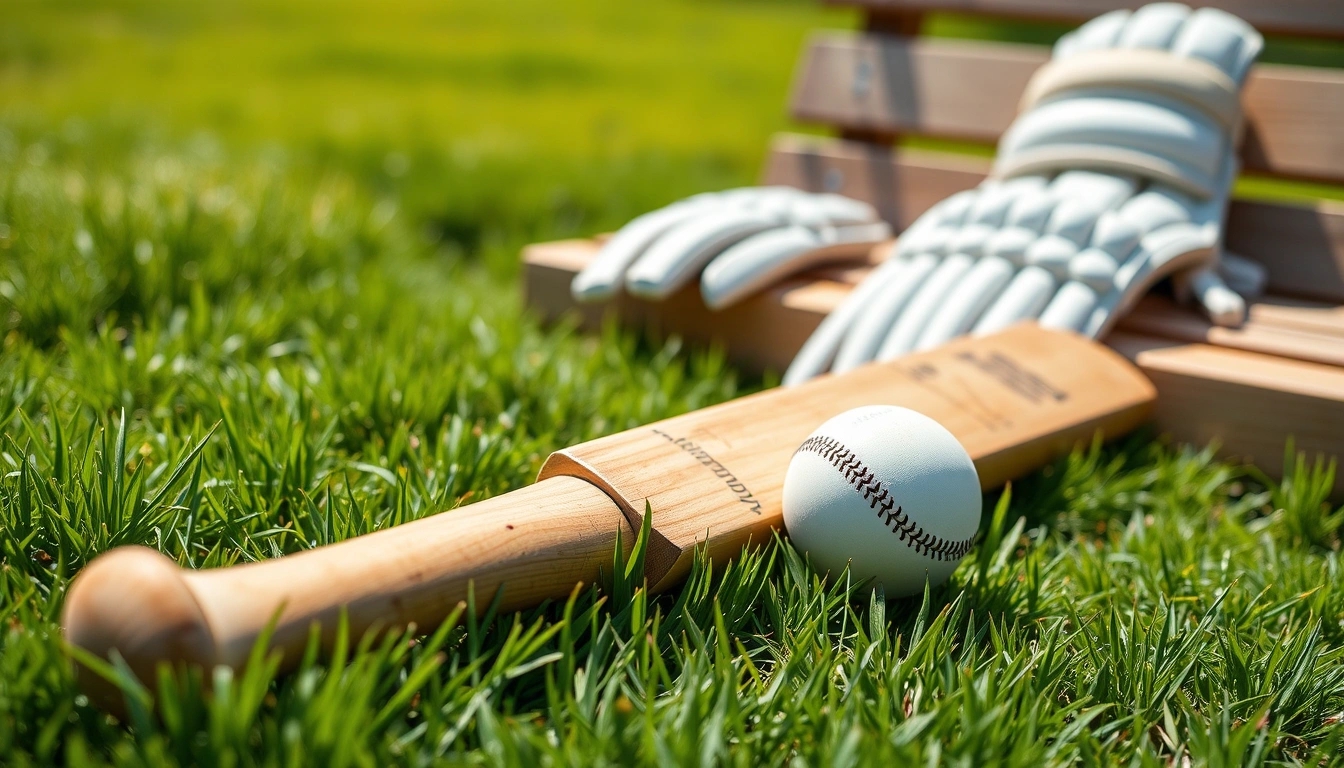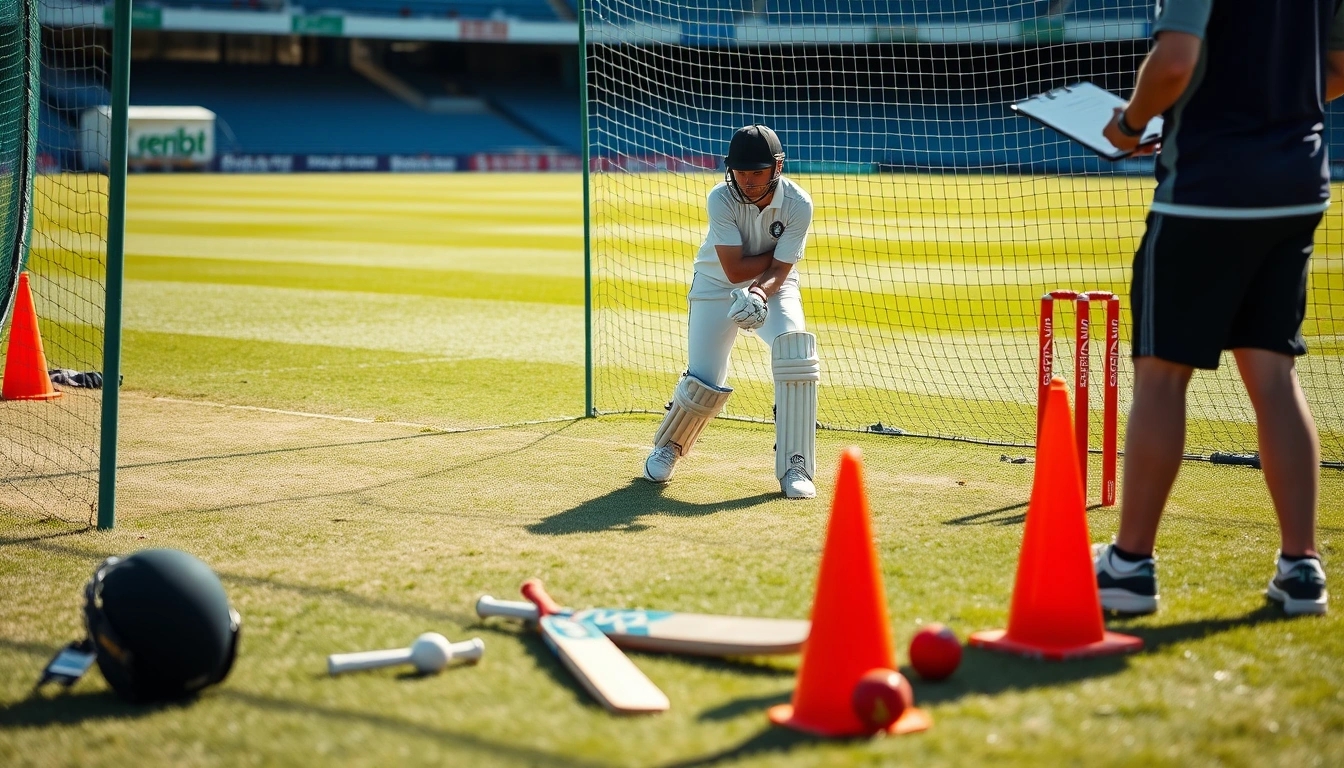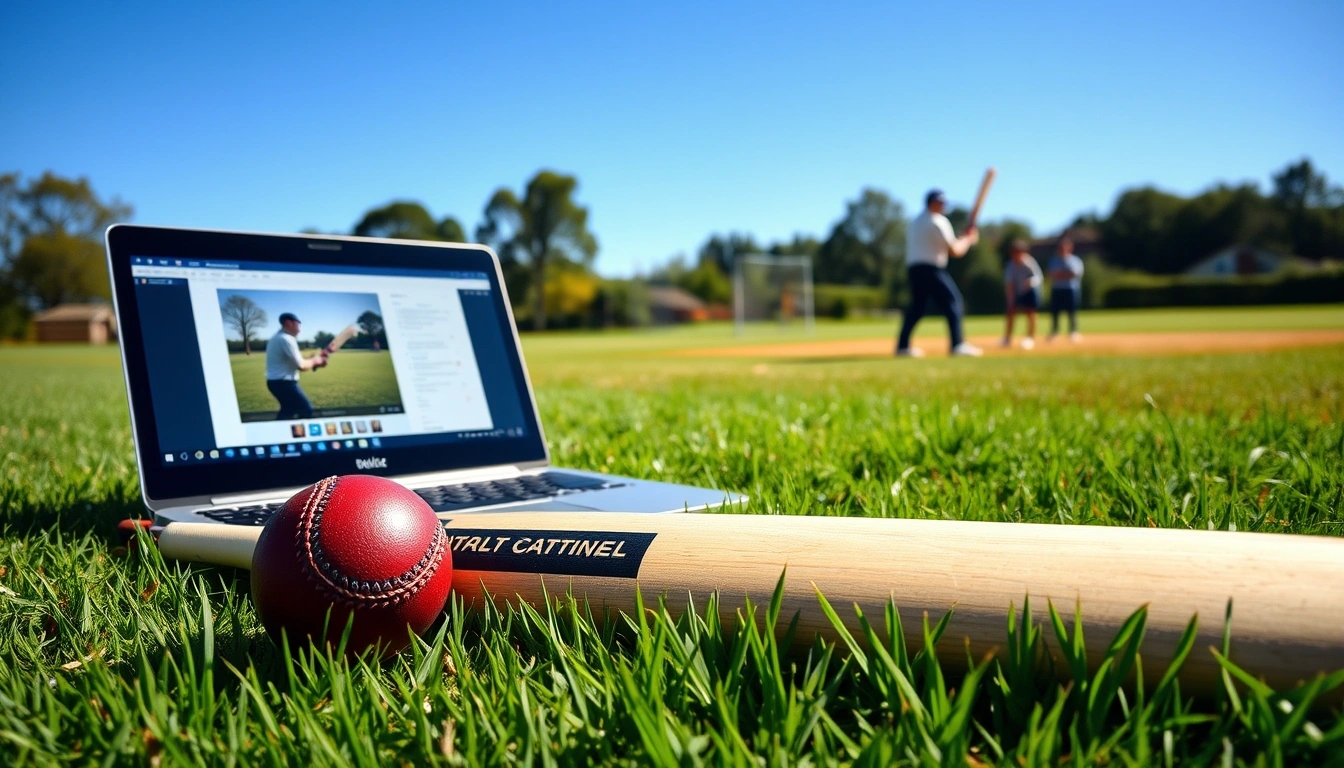Breaking into cricket in the UK might feel like trying to crack the code of a secret society. Honestly, it can be a bit intimidating—what with all the jargon, the gear, and the sheer number of players who seem to have been batting since they were in nappies. But here’s the good news: you don’t need to be a prodigy to get started. With the right attitude, a pinch of patience, and some handy tips, even the most clueless newbie can find their spot on the field and actually enjoy the game.
First off, let’s address the elephant in the room—cricket isn’t just a sport; it’s practically a British institution. Understanding the basics of how cricket works in the UK is crucial before you dive in headfirst. The game operates on many levels, from your local village green matches to the high-stakes county championships. Knowing where you fit in this hierarchy can save you a lot of confusion and potential embarrassment.
| Level | Description | Typical Player Experience |
|---|---|---|
| Grassroots | Local clubs, casual matches, community leagues | Beginners to intermediate |
| Club Cricket | Organised teams, competitive but inclusive | Intermediate to advanced |
| County Cricket | Professional regional teams, high skill level | Advanced, professional |
Now, finding the right club can feel like dating—some clubs will click with your vibe, others might be a bit too serious or intimidating. Don’t be shy to visit a few, ask questions, and see where you feel comfortable. Most clubs are surprisingly welcoming to beginners, especially if you show enthusiasm.
- Tip 1: Look for clubs that offer beginner sessions or social cricket.
- Tip 2: Ask if they provide loaner equipment so you don’t have to splash cash immediately.
- Tip 3: Check their training schedules and match days to see if they fit your availability.
Speaking of equipment, don’t go bananas buying the flashiest bat or the fanciest pads just yet. The essentials are pretty straightforward: a decent bat, some comfortable whites or sportswear, and a pair of cricket shoes if you can get them. Helmet and gloves are important but many clubs have spares for newbies to borrow. Remember, it’s about getting on the field and learning, not looking like you’re ready for the Ashes.
Training sessions might seem like boot camp at first, but they’re usually a mix of drills, practice games, and a lot of chatting. Expect to fumble with the rules, miss catches, and maybe embarrass yourself a bit—that’s all part of the process. Coaches and teammates generally appreciate effort over perfection, so keep your chin up.
| Activity | Purpose | Duration |
|---|---|---|
| Warm-up and stretches | Prevent injuries, prepare body | 15 minutes |
| Batting drills | Improve hand-eye coordination | 30 minutes |
| Bowling practice | Learn basic bowling techniques | 30 minutes |
| Fielding exercises | Enhance catching and throwing skills | 20 minutes |
| Mini game or scrimmage | Apply skills in match-like situation | 30 minutes |
Lastly, if you’re baffled by terms like “LBW,” “googly,” or “slip,” don’t worry—you’re not alone. Cricket has its own secret language, but you’ll pick it up faster than you think. Ask questions, watch games (even if it’s just highlights on YouTube), and maybe keep a little glossary handy.
Joining a UK cricket team as a beginner isn’t about being perfect right away; it’s about showing up, mucking in, and having a laugh. So, grab that bat, find a club, and dive in. You might surprise yourself—and trust me, after a few sessions, you’ll be hooked.
Understanding the basics of cricket in the UK
Before you even think about stepping onto the pitch with a bat in hand, it’s absolutely vital to get a solid grasp on what cricket truly means in the UK. Now, cricket isn’t just a sport here — it’s a bit of a cultural institution, a weekend ritual, and sometimes, a reason for heated pub debates. But if you’re new to all this, it might feel like you’ve landed on a different planet where everyone speaks a bizarre language and plays by rules that seem to change every five minutes. Fear not, mate — it’s not as complicated as it looks once you break it down.
First off, cricket in the UK is structured in layers, from the very grassroots level where kids and absolute beginners get their first taste, right up to the professional county teams and the national squad. Think of it as a pyramid: the base is wide and welcoming, and the top is where the big guns play. Most beginners start at local cricket clubs, which are scattered across towns and villages like little cricketing hubs. These clubs are the heartbeat of the game — places where you can learn, mess up, make friends, and gradually get better.
| Level | Description | Typical Participants |
|---|---|---|
| Grassroots | Local clubs, schools, youth teams | Beginners, juniors, casual players |
| Club Cricket | Adult amateur leagues, weekend matches | Enthusiasts, semi-competitive players |
| County Cricket | Professional domestic competition | Professional cricketers, aspiring pros |
| International | England national team and international tours | Elite professional players |
Now, the game itself — cricket is often misunderstood as this long, slow sport where nothing much happens. Sure, Test matches can drag on for days, but there are also shorter formats like T20 that are fast, furious, and downright entertaining. The main objective? Score more runs than the other team while trying to get their players “out.” Simple in theory, but the devil’s in the details.
- Runs: The currency of cricket. Batsmen score runs by hitting the ball and running between wickets.
- Wickets: The target for bowlers. Getting a batsman out is called taking a wicket.
- Overs: Sets of six balls bowled by one bowler before switching ends.
But here’s a kicker — cricket in the UK isn’t just about the game. It’s about the community, the Saturday afternoon teas, the post-match banter, and the lifelong friendships forged on muddy pitches. So before you rush out to buy that flashy cricket bat, take a moment to soak in the culture and the structure. It’ll make your journey into cricket a whole lot smoother — and a lot more fun.
In a nutshell, understanding the basics of cricket in the UK means appreciating both the game and its place in society. Whether you’re aiming to be the next Joe Root or just fancy a casual knock-about on weekends, knowing how the game ticks will set you up for success — or at least stop you from looking like a total newbie when you turn up at your first club session.
Quick Tips to Remember:
- Start at a local club; they’re friendly and full of helpful folks.
- Don’t stress the rules straight away — cricket’s got layers, and you’ll peel them back over time.
- Watch a few matches (live or on TV) to get a feel for the pace and atmosphere.
- Ask questions — cricket fans love to talk about their game, sometimes too much!
So, ready to dive in? Just remember, cricket’s not about being perfect from day one. It’s about enjoying the game, the people, and yes, occasionally getting bowled out embarrassingly. Welcome to the club.
Finding the right local cricket club
So, you’ve decided to jump into the world of cricket in the UK — brilliant! But here’s the catch: joining just any club won’t cut it. You want a place that feels like home, where your beginner jitters won’t be met with raised eyebrows or cricket snobbery. Finding the right local cricket club isn’t just about location or skill level; it’s about vibe, community, and a bit of trial and error. Let’s break down how you can scout that perfect team without feeling like you just crash-landed from Mars.
First off, don’t just Google “cricket clubs near me” and pick the top hit. Sure, location matters — you don’t want to be trekking miles just to get a few overs in — but what’s more important is the club’s culture. Are they welcoming to newbies? Do they offer beginner-friendly sessions? Some clubs are all about competitive leagues and might intimidate a total rookie, while others thrive on encouraging fresh faces and fostering a relaxed atmosphere.
- Visit the club’s website and social media: Look for photos, posts, or comments that show inclusivity or beginner programs.
- Check if they have a ‘new players’ contact: Many clubs assign a liaison to help newbies settle in.
- Ask around: Local sports shops or community centers often have the inside scoop on which clubs are newbie-friendly.
Now, here’s a little secret — don’t be shy about dropping in for a training session or two before signing up. Most clubs will let you sit in or even join practice sessions for free or a small fee. This is your chance to gauge the atmosphere, see how players interact, and whether the coaching style suits you. If you walk in and everyone’s chatting like they’ve known each other since birth, and you feel like a total outsider, it’s okay to try another club. Remember, cricket is as much about team spirit as it is about runs and wickets.
| What to Look For | Why It Matters |
|---|---|
| Friendly and approachable members | Helps you feel comfortable and welcomed |
| Beginner training sessions | Allows gradual skill building without pressure |
| Flexible attendance | Life’s busy! Clubs that understand this keep you coming back |
| Clear communication | Good for staying in the loop and avoiding confusion |
Another tip: don’t get hung up on your current skill level. Cricket clubs range from absolute beginners to semi-pros, and many have multiple teams to cater for all abilities. You’ll often find a “second XI” or “third XI” team that’s perfect for learning and improving without the fear of being thrashed every game.
Finally, keep an open mind and be patient. Finding the right club might take a bit of legwork and a few awkward hellos, but once you find your cricket family, it’s worth every wobble and misfield. After all, cricket isn’t just a game here — it’s a community. And trust me, there’s a seat (and a cup of tea) waiting for you.
- Practical tip: Bring along a friend or two for moral support on your first visit.
- Don’t be afraid to ask questions: About training, matches, or even club socials — it shows you’re keen!
- Remember: Every player started as a beginner once, so no one expects you to be perfect.

What equipment do you really need?
Alright, before you sprint off to buy the flashiest cricket bat or those shiny gloves that look like they belong in a pro’s locker, take a deep breath. Seriously, don’t blow your budget on fancy gear just yet. Cricket can be an expensive hobby if you let it, but starting out doesn’t mean you need to look like a seasoned player straight away. Let’s break down the bare essentials every beginner should have to get going without looking like a total novice—or spending a fortune.
First up, the bat. You don’t need to splash out on the top-of-the-line willow right away. A decent, mid-range bat from a reliable brand will do just fine. Look for something that feels comfortable in your hands—weight and grip matter more than the price tag. You’ll probably upgrade once you’ve got a hang of the game, so no need to go mad here.
| Item | Purpose | Recommended Features | Estimated Cost |
|---|---|---|---|
| Bat | Hitting the ball | Lightweight, comfortable grip, mid-range brand | £30-£70 |
| Batting Gloves | Protect hands and improve grip | Basic padding, breathable material | £15-£40 |
| Helmet | Head protection | Must-have for safety, good ventilation | £40-£80 |
| Pads | Leg protection | Lightweight, adjustable straps | £25-£50 |
| Cricket Shoes | Grip and comfort | Spiked soles or rubber grip | £30-£60 |
Now, moving on to protective gear. Don’t be that guy who skips on safety because “it’s just practice.” You’ll want a helmet—this isn’t just for the pros getting smashed by fast bowlers, beginners get hit too (sometimes more often). A good helmet with a face guard is a must-have. Next, grab some basic batting pads and gloves. You don’t need the fanciest gloves with all the bells and whistles; basic ones with decent padding will keep your hands safe and help with grip.
Oh, and shoes! Please don’t show up in your trainers or sandals. Cricket shoes with spikes or rubber soles designed for the pitch will save your ankles and help you run like you mean it. They’re not the cheapest, but trust me, your feet will thank you.
- Don’t buy everything at once: Start small and build your kit over time.
- Ask around: Sometimes clubs have gear to lend or second-hand bargains.
- Comfort beats flash: It’s about how it fits and feels, not how it looks.
Finally, a quick heads-up: avoid the temptation to buy the “latest and greatest” cricket gadgets or accessories when you’re just starting out. You’ll probably find yourself upgrading or changing gear as your skills improve and you figure out what suits you best. Stick to the basics and focus on learning the game first. Trust me, looking like a pro is overrated when you’re still trying to figure out which end of the bat to hold.
So, to recap: a decent bat, protective gloves, helmet, pads, and proper shoes. That’s your starter pack. Everything else? Optional, for now. Get these right, and you’re already halfway to being a proper cricket player without burning a hole in your wallet.
Remember: Cricket is a marathon, not a sprint. Gear up smart, play safe, and enjoy the game!
Joining training sessions: What to expect
Stepping onto a cricket training ground for the very first time can feel a bit like walking into a foreign movie without subtitles — confusing, a tad overwhelming, and you’re not quite sure if you’re in the right place. But hey, don’t sweat it! Knowing what typically happens during a cricket training session can turn that nervous energy into confidence, even if you haven’t the faintest clue about the rules yet.
First off, expect a warm welcome. Most clubs, especially local ones, thrive on new players and will make an effort to include you. The first few minutes usually involve some light chit-chat and introductions because cricket is as much about the social buzz as it is about the game itself.
| Typical Cricket Training Session Breakdown | What Happens |
|---|---|
| Warm-up | Jogging, stretching, and some dynamic movements to get your muscles ready and avoid injuries. |
| Skill Drills | Batting, bowling, and fielding drills designed to build technique and muscle memory. |
| Practice Matches | Mini games or scenario-based practice to apply skills learned in drills. |
| Cool Down | Stretching and sometimes a quick team chat or feedback session. |
Now, before you panic about not knowing how to bat or bowl, remember: training sessions are made for learning. Coaches and senior players expect beginners to be clueless. They’ll usually break down each drill step-by-step, and you’ll get plenty of chances to ask questions or even mess up (which is totally fine). Just try not to be the person who throws the ball like they’re hurling a brick through a window — but if you do, hey, it’s all part of the fun.
- Don’t be shy to ask for help. Everyone started somewhere, and most players love sharing tips.
- Bring basic gear. Trainers, comfortable clothes, and a water bottle are essentials. Leave the fancy bats and pads at home until you’re sure this is your thing.
- Be patient with yourself. You won’t turn into Joe Root overnight. Cricket’s a slow burner.
One thing that surprises many beginners is how much standing around there is. Cricket isn’t non-stop action like football; there’s a lot of waiting, chatting, and strategizing. So, if you’re the type who likes constant hustle, you might find yourself twiddling thumbs between drills. But that downtime is golden for bonding with teammates and soaking in the game’s vibe.
Finally, remember that training sessions are as much about fun and community as skill-building. You might trip over your own feet, miss a catch, or bowl a wild delivery, but if you keep showing up, you’ll soon find yourself part of something bigger — a team that cheers the wins, laughs off the blunders, and loves cricket for all its quirks.
So, lace up those trainers, grab a bottle of water, and jump in. The pitch is waiting, and trust me, once you get the hang of it, you’ll wonder why you ever thought training was intimidating in the first place.
Learning the cricket jargon
Cricket jargon — if you’re new to the game, it might as well be a foreign language. Words like “LBW,” “googly,” and “slip” get thrown around so casually, you’d think everyone was born speaking cricket. But don’t sweat it; here’s a no-nonsense guide to the lingo that’ll save you from nodding along cluelessly at the pub or on the sidelines.
First off, LBW stands for Leg Before Wicket. Sounds complicated? Well, it’s basically when the bowler manages to get the batsman out by hitting their leg in front of the wicket instead of the bat. Umpires love this one because it’s all about precision and reading the batsman’s moves. It’s a bit controversial too — expect debates and arm-waving if you shout LBW on your mates.
Then there’s the googly. No, it’s not a weird dance move or a typo of “googly eyes.” It’s a sneaky delivery bowled by a leg-spinner that spins the opposite way to what the batsman expects. Imagine thinking the ball’s going one way, but it suddenly does a cheeky U-turn. That’s the googly for ya — a real mind-bender and a crowd-pleaser when it bamboozles a batsman.
Now, “slip” isn’t just someone who trips over their own feet. In cricket, it’s a fielding position right behind the batsman’s shoulder, ready to catch any edges off the bat. Think of the slip cordon as the team’s safety net — if the ball nicks the bat, these guys are there to snag it before it hits the ground. Quick reflexes and sticky hands are a must here.
| Term | Meaning | Why It Matters |
|---|---|---|
| LBW | Leg Before Wicket – batsman out if ball hits leg in front of wicket | Key dismissal method; often debated |
| Googly | Bowling trick that spins the ball opposite to expected direction | Confuses batsmen; shows bowling skill |
| Slip | Fielding position behind batsman to catch edges | Crucial for catching; requires alertness |
- Duck — When a batsman gets out without scoring a single run. Brutal, but it happens.
- Yorker — A ball pitched right at the batsman’s feet; tough to hit and often used to bowl them out.
- Century — Scoring 100 runs in a single innings. Every batsman’s dream.
Don’t panic if this sounds like a lot. Cricket lingo is a bit like a secret club handshake — once you get it, you’re in. And trust me, you’ll sound way cooler at the next match if you casually drop “That bowler’s googly really did a number on the batsman” rather than “The ball spun funny.” It’s all part of the charm of cricket — a game that’s as much about chatter and banter as it is about runs and wickets.
So next time you’re at the crease or cheering from the sidelines, remember: cricket isn’t just a sport, it’s a language. And now, you’re one step closer to being fluent.

How to improve your batting skills as a newbie
So, you’ve been watching cricket on TV, and batting looks like a breeze, right? Well, hold your horses! Once you step onto the pitch, it’s a whole different ball game. Batting isn’t just about swinging wildly and hoping for the best. It’s a mix of technique, timing, and a dash of nerves. But don’t sweat it — even the pros started somewhere, and with a bit of practice and patience, you can get your bat cracking like a seasoned player.
First things first: get your stance sorted. Your feet should be shoulder-width apart, knees slightly bent, and weight balanced. Sounds simple, but trust me, if you mess this up, you’ll be flailing like a fish out of water. Try this drill: stand in front of a mirror and practice your stance until it feels natural. It helps build muscle memory — your body will thank you later.
| Element | What to Do |
|---|---|
| Feet Position | Shoulder-width apart, parallel to the crease |
| Knees | Slightly bent for better balance |
| Grip | Firm but relaxed, top hand controls the bat |
| Head | Still and eyes level, watching the ball |
Next up, timing. Oh boy, timing is everything. You might have the strongest arms, but if your timing’s off, you’ll either miss the ball or send it straight to a fielder. A practical tip? Use a tennis ball or softer cricket ball to start with. Have someone toss it gently, and try to connect with the middle of your bat — that sweet spot that sends the ball flying. If you’re consistently missing, don’t get frustrated; even legends have days like that.
- Drill #1: Shadow batting — no ball, just practice your swing and foot movement.
- Drill #2: Soft ball toss — focus on eye coordination and timing.
- Drill #3: Batting against a bowling machine or slow bowlers to build confidence.
Let’s talk about footwork because, honestly, it’s the unsung hero of batting. Good footwork helps you get into the right position to play the ball effectively. Practice stepping forward, back, and sideways to adjust to different deliveries. It’s not glamorous, but it’s crucial. And hey, if you’re feeling fancy, try some ladder drills or agility exercises to boost your movement on the pitch.
Now, here’s a little secret: watching cricket highlights alone won’t make you a better batter. You gotta get out there, mess up, learn, and repeat. Don’t be afraid to ask for feedback from your coach or teammates. Sometimes, a tiny tweak in your grip or stance can make a world of difference.
Quick Tips Summary:- Keep your eyes on the ball, always.- Relax your grip; tension kills your swing.- Practice regularly but don’t overdo it.- Focus on footwork as much as bat swing.- Don’t be shy to try different shots.- Learn from mistakes — they’re part of the journey.
Remember, batting is as much mental as it is physical. Stay patient, keep your chin up, and embrace the challenge. Before you know it, you’ll be smashing boundaries and maybe even giving those TV pros a run for their money!
Bowling basics for beginners
Bowling in cricket? Oh, it’s way more than just hurling a ball down the pitch and hoping for the best. If you think you can just fling it like a toddler with a soggy spaghetti noodle, well, you’re in for a rude awakening. Bowling is an art form, a blend of skill, strategy, and a pinch of flair that can leave the batter scratching their head wondering what just happened. So, let’s get you started on the right foot—or rather, the right arm—with some basics that’ll keep you from embarrassing yourself on the field.
First off, forget about chucking the ball. The laws of cricket are pretty strict about that. Your arm must stay straight during delivery; no funny business like bending and snapping it around like a slingshot. If you do, the umpire will give you the evil eye and call it a no-ball, which is basically a freebie for the batting side. Not cool.
Here’s a quick rundown of the core bowling styles to keep in mind:
- Fast bowling: This is all about speed and aggression. You run up to the crease and unleash the ball at high velocity, aiming to beat the batter with pace and bounce.
- Swing bowling: A crafty cousin of fast bowling, where the ball moves through the air, curving either towards or away from the batter.
- Spin bowling: Slow and sneaky, spin bowlers use their fingers or wrist to make the ball turn sharply after it bounces, confusing the batter’s timing.
| Grip | Description | Best For |
|---|---|---|
| Seam Grip | Hold the ball with the seam upright between your index and middle fingers. | Fast and swing bowlers |
| Spin Grip | Spin bowlers grip the ball with fingers spread to impart spin on release. | Off-spin and leg-spin bowlers |
Now, let’s talk about your run-up and delivery stride. Don’t just sprint like you’re late for a bus and fling the ball wildly. A controlled run-up helps you build momentum and rhythm. Usually, a short and steady approach is best for beginners. Once you reach the crease, plant your front foot firmly, keep your eyes on the target, and release the ball with a smooth arm action. Try to keep your wrist firm but flexible—that’s where the magic happens.
Here’s a little secret: bowling is as much about mental game as physical. You need to think about where you want the ball to pitch, how to outsmart the batter, and when to mix things up. Bowling the same delivery over and over is a surefire way to get clobbered. Change your pace, vary your line, and keep them guessing.
- Tip 1: Practice your bowling action in front of a mirror or get someone to record it. Spot the awkward bits and tweak them.
- Tip 2: Don’t overdo the speed at first. Accuracy beats speed when you’re starting out.
- Tip 3: Focus on your follow-through. A good follow-through helps with balance and prevents injuries.
Remember, every legendary bowler started as a beginner who probably bowled like a confused toddler. So, be patient, keep practicing, and most importantly, have fun with it. Because at the end of the day, cricket is about enjoying the game, not just smashing sixes or taking wickets.
Quick Checklist for Beginner Bowlers:
- Keep your arm straight during delivery- Choose a bowling style that suits you (fast, swing, or spin)- Master the grip for control- Develop a consistent run-up and delivery stride- Focus on accuracy before speed- Mix up your deliveries to confuse the batter- Practice regularly and watch your technique
Get out there, give it a whirl, and don’t worry if you mess up. Even the pros have off days. Now, go on—bowl like you mean it!
Fielding positions and why they matter
Fielding positions in cricket might sound like just dots on a field, but trust me, knowing where to plant yourself can turn you from a wallflower to a game-changer. It’s not just about standing around looking busy; each spot has a story, a purpose, and a sneaky bit of strategy behind it. So, buckle up as we break down these positions and why they’re more important than you think.
First off, let’s get one thing straight: fielding isn’t just about catching the ball. It’s about cutting off runs, creating pressure, and making the batsman sweat. And where you stand influences all that. Imagine you’re a newbie and someone yells “cover!”—do you know where to run? Probably not. That’s why understanding these spots is crucial.
| Position | Location | Primary Role | Why It Matters |
|---|---|---|---|
| Slip | Behind the batsman, next to the wicketkeeper | Catch edges off the bat | Key for early wickets, especially against fast bowlers |
| Mid-off | On the off side, close to the bowler | Stop straight drives and quick singles | Prevents easy runs and keeps batsman in check |
| Mid-on | On the leg side, near the bowler | Cut off leg drives and quick singles | Balances the field and supports the bowler |
| Square leg | On the leg side, square to the batsman | Intercepts flicks and pulls | Stops boundaries and creates run-out chances |
| Third man | Behind the slips, on the off side | Stops edges flying past slips | Prevents easy boundaries and frustrates batsmen |
Now, don’t get overwhelmed by all these fancy names. The idea is to get a feel for the field. For example, if you’re quick and have sharp hands, slipping into the slip cordon could be your thing. Love sprinting and diving? Maybe point or cover suits you better. Not all positions demand the same skills, so there’s a spot for everyone.
Here’s a quick checklist to figure out where you might fit:
- Are you alert and quick to react? Consider slips or wicketkeeper.
- Good at throwing accurately? Mid-off or mid-on could be your zone.
- Enjoy chasing down balls and diving? Point, cover, or square leg might be fun.
One thing’s for sure: standing in the wrong place can be embarrassing. Imagine missing a simple catch or letting a ball slip through because you were daydreaming about your lunch. Oops! Fielding is about focus, anticipation, and quick thinking. Coaches often say, “A good fielder saves 20 runs a match,” and that’s no joke.
So, next time you’re on the field, don’t just shuffle around. Think about your position, watch the batsman’s stance, and be ready to pounce. Remember, cricket is a team game, and each fielder is a vital cog in the wheel. Master your spot, and you’ll be the player everyone wants on their side.

Getting fit for cricket: Fitness tips for beginners
Cricket might look like a leisurely stroll on the field with a bat in hand, but don’t let that fool you. This sport demands a surprising amount of stamina, agility, and quick reflexes. If you’re just starting out and thinking, “Great, now I have to become an athlete overnight,” hold your horses! You don’t need to turn into a gym junkie or a marathon runner right away. Instead, let’s chat about some beginner-friendly fitness tips that’ll keep you game-ready without making you dread every workout.
First off, cricket is a game of bursts — sprinting between wickets, diving for catches, or chasing down a ball in the outfield. So, your fitness regime should focus on building endurance and explosive power. But hey, no need to sign up for a 10K run tomorrow morning. Start small with some light jogging or brisk walking for about 15-20 minutes a day. It’s a simple way to boost your cardiovascular health and get your lungs used to moving without gasping for air after two overs.
| Fitness Area | Beginner Tips | Why It Matters |
|---|---|---|
| Cardiovascular Endurance | Start with brisk walks or light jogs 3 times a week. | Improves stamina to last through long matches. |
| Agility & Speed | Try ladder drills or cone sprints for quick footwork. | Helps with quick direction changes in the field. |
| Strength | Bodyweight exercises like squats, lunges, and push-ups. | Builds muscle for powerful batting and bowling. |
| Flexibility | Stretch daily focusing on hamstrings, calves, and shoulders. | Prevents injuries and improves range of motion. |
Now, agility is the name of the game. Cricket isn’t just about standing still and swinging your bat; you gotta move fast, catch sharp, and sometimes dive like a cat on a hot tin roof. Ladder drills or cone exercises are fantastic for beginners to improve footwork. Don’t have fancy equipment? No worries! Just mark spots on the ground with chalk or use household items to create your own mini obstacle course. It’s fun and will have you feeling like a ninja in no time.
Strength training? Yeah, it sounds intimidating, but you don’t need to lift heavy barbells to get stronger. Bodyweight exercises like squats, lunges, and push-ups are your best friends here. They build muscle endurance which helps when you’re swinging that bat or bowling for hours. Plus, stronger legs and core mean fewer injuries — trust me, you want to avoid pulling a hammy on your first match.
- Warm-up and cool down: Never skip these. A good warm-up gets your blood flowing and muscles ready, while cooling down helps you recover faster.
- Hydration: Cricket matches can be long and draining. Keep a water bottle handy and sip often.
- Nutrition: Don’t just carb-load like it’s a marathon. Balanced meals with protein, carbs, and fats keep your energy steady.
Here’s a quick pre-match routine you might wanna try:
- 5 minutes light jogging- Dynamic stretches (leg swings, arm circles)- 3 sets of 10 bodyweight squats- Short sprints (5 x 20 meters)- Finish with some deep breathing to focus
Remember, fitness for cricket is a marathon, not a sprint. Stick to these basics, listen to your body, and you’ll notice your game improving without feeling like you’re training for the Olympics. So, lace up those trainers, get moving, and most importantly, have fun while you’re at it!
Joining your first match: Dos and don’ts
Alright, so you’ve finally made it to your very first cricket match. Heart pounding, palms sweaty, and probably wondering if you remembered to wear clean socks or if you accidentally grabbed your mate’s lucky cap instead of your own. Relax! Everyone’s been there, and trust me, it’s a rollercoaster of excitement and nerves. But before you charge onto the pitch like a headless chicken, here’s a down-to-earth guide on what to actually do (and what to steer clear of) when you take that first step onto the field.
Do show up early. Sounds obvious, right? But you’d be surprised how many rookies rock up just in time or worse, late. Getting there ahead of the game lets you soak up the atmosphere, meet your teammates, and maybe sneak in a warm-up or two. Plus, it shows you’re serious – coaches notice punctuality.
Don’t be that guy who hogs the spotlight. Your first match isn’t the time to unleash your “secret” bowling action or try to smash sixes like a pro. Focus on playing steady, listening to your captain, and soaking in the experience. Cricket’s a team game, not a one-man show.
| Dos | Don’ts |
|---|---|
| Arrive early to warm up and meet teammates | Arrive late and miss important instructions |
| Listen carefully to your captain and coach | Ignore advice or try to do your own thing |
| Stay hydrated and keep your energy up | Forget water and crash halfway through |
| Respect opponents and officials | Argue over umpire decisions or trash talk |
One thing that trips up many beginners is the unpredictability of the game. You might be fielding for ages with nothing happening, then suddenly you’re called to bat with the pressure of everyone watching. Don’t panic. Keep your cool, focus on the basics, and remember why you started playing cricket in the first place – for fun and the love of the game.
- Do ask questions if you’re unsure about positions or rules. No one expects you to be a walking cricket encyclopedia.
- Don’t get disheartened if you mess up. Everyone drops catches or gets out cheaply at some point.
- Do support your teammates, cheer loudly, even if you’re not directly involved in the play.
- Don’t sulk on the sidelines. Cricket is as much about team spirit as it is about skill.
And hey, a little bit of self-deprecating humour goes a long way. If you bowl a terrible ball or miss a catch, a quick “Well, that’s one way to keep the game interesting!” can lighten the mood and make you more relatable. Trust me, cricket teams love a player who can laugh at themselves.
Tips for your first match:- Pack your kit the night before (don’t forget your spikes!)- Bring snacks and water (hangry players are no fun)- Wear sunscreen if it’s sunny (unless you want to look like a lobster)- Stay positive, no matter what happens
Remember, your first match is just the beginning. You’ll learn, stumble, and improve with every game. So, take a deep breath, trust your training, and enjoy the chaos that is cricket. After all, it’s not about being perfect—it’s about getting out there and having a blast.
Building camaraderie and team spirit
Cricket isn’t just about smashing sixes or taking wickets; it’s a game deeply rooted in mateship and team spirit. If you think you can just stroll onto the pitch, play your shots, and expect the lads to instantly welcome you with open arms, well, think again! It takes more than just talent to become part of the cricket family. You’ve got to earn your stripes off the field too. So how do you bond with your teammates beyond the scoreboard? Let’s dive in.
- Show up early and stay late: Nothing says “I’m part of the gang” like arriving before training starts and sticking around after the session. It’s the perfect chance for casual chats, sharing a laugh, or even discussing the latest cricket drama. This informal time builds trust and breaks the ice.
- Be genuinely interested: Ask questions about your teammates’ lives beyond cricket. Who’s got the dodgiest haircut? Who’s the snack king? Knowing these little things creates connections that last.
- Embrace the banter: Cricket teams thrive on playful teasing. Don’t take it personally if someone ribs you for dropping a catch. It’s all part of the bonding process – just make sure you can dish it back too!
| Activity | Why it Helps | How to Get Involved |
|---|---|---|
| Team socials | Builds friendships off the pitch | Join post-match drinks, BBQs, or quiz nights |
| Group training drills | Fosters collaboration and trust | Volunteer for pair or group exercises |
| Shared goals | Unites everyone with a common purpose | Discuss team targets openly and encourage input |
Now, let’s be honest, not everyone is an extrovert or a natural chatterbox. Some folks prefer to keep their head down and just play. And that’s okay! But remember, cricket is a team sport, and the best teams thrive on communication and support. Even a simple “well played” or “nice catch” can boost morale and make a difference.
Practical tip: Try organizing or suggesting a casual activity outside cricket. It could be as simple as grabbing a pizza or watching a cricket match together on TV. These moments create shared memories and stories, turning teammates into mates.
Top 5 Quick Tips for Building Team Spirit:1. Listen more than you talk – people appreciate being heard.2. Celebrate small wins – a good over, a great catch, or a funny moment.3. Help newbies feel welcome – remember your first day jitters?4. Keep a positive attitude – cricket’s tough; negativity kills morale.5. Be reliable – showing up consistently earns respect.
In the end, cricket is a beautiful blend of competition and camaraderie. Runs and wickets matter, sure, but the lasting friendships and shared experiences are what make the game truly special. So, next time you’re out there, don’t just think about your stats—think about how you can be part of something bigger. Because in cricket, it’s the team spirit that often wins matches.

Where to find resources and coaching support
Alright, so you’ve decided to take the plunge into cricket, but now you’re staring at a mountain of questions and wondering where on earth to start getting better without losing your mind. Fear not! Whether you’re the kind of person who loves learning from your phone or prefers a good old chinwag with a coach at the local club, there are plenty of ways to get the help you need without feeling like you’re drowning in cricket jargon or endless drills.
First off, online tutorials are a godsend. YouTube channels, cricket apps, and websites like the England and Wales Cricket Board (ECB) offer tons of free content. From basic batting techniques to understanding field placements, you can binge-watch videos at your own pace. No pressure, no one judging your swing. Just you, your screen, and a cricket ball (hopefully).
- YouTube Channels: Look for creators like “The Cricket Coach” or “Cricket Masterclass” who break down skills in bite-sized clips.
- Apps: Try “Cricket Captain” or “My Cricket Coach” for interactive tutorials and drills.
- Websites: The ECB’s official site has beginner guides and downloadable PDFs that are surprisingly useful.
But, let’s be honest, nothing beats hands-on coaching. Local clubs often run beginner-friendly sessions where you can get personalised tips, feedback, and maybe a bit of banter to keep things light. Don’t be shy—most coaches love helping newbies and will adjust drills to your level. Plus, being around other beginners means you’re less likely to feel like the odd one out.
| Type | What to Expect | Cost | Best For |
|---|---|---|---|
| Community Club Sessions | Group drills, basic skills, friendly environment | Usually free or low-cost | Absolute beginners, social players |
| Private Coaching | One-on-one tailored training | Higher cost, pay per session | Focused skill improvement, serious beginners |
| Cricket Academies | Structured programs, fitness, and technique | Mid to high range | Those wanting to progress quickly |
Now, if you’re the kind of person who thrives on community, look out for cricket meetups or social leagues in your area. These are fantastic for picking up tips organically and making mates who can share their own hacks and horror stories. Social media groups and forums like Reddit’s r/Cricket or local Facebook groups can also point you towards hidden gems—like a coach who’s brilliant but flies under the radar.
One little nugget of wisdom: don’t try to swallow everything at once. Cricket’s a game of patience, and so is learning it. Pick a couple of resources that vibe with you and stick with them for a bit before hopping onto the next shiny thing. Consistency beats chaos every time.
Finally, remember to use your local library or sports centres. They often have books, DVDs, and even workshops that are overlooked but packed with good stuff. Sometimes the old-fashioned way is the best way to build solid foundations.
So, whether you’re watching a slow-motion batting tutorial at midnight or sweating it out at a Saturday morning coaching session, there’s a path for you. The key is to keep showing up, keep asking questions, and most importantly, keep enjoying the madness that is cricket.
Frequently Asked Questions
- Do I need to have any prior experience to join a UK cricket team?
Not at all! Cricket clubs in the UK welcome beginners with open arms. The key is enthusiasm and willingness to learn. Many clubs offer beginner-friendly sessions, so you can start from scratch and build your skills step-by-step.
- What basic equipment should I buy before joining a club?
Don’t rush into buying expensive gear. At minimum, you’ll need a cricket bat, comfortable sportswear, and suitable shoes. Helmets and pads are essential once you start playing matches. Clubs often have equipment you can borrow initially, so focus on comfort and safety first.
- How do I find a cricket club that suits me?
Look for clubs that match your location, skill level, and social vibe. Check local sports centres, community boards, or online platforms like Meetup. Visiting a few clubs and chatting with members is the best way to find your cricket “home.”
- What should I expect during my first training session?
Expect a mix of warm-ups, basic drills, and friendly coaching. Don’t worry if you feel out of your depth—everyone starts somewhere! Coaches focus on fundamentals and making sure you feel comfortable on the field.
- Can I improve my batting and bowling skills on my own?
Absolutely! Practicing simple drills at home or in a park helps a lot. Watching tutorials and mimicking techniques can boost your confidence. However, joining training sessions will accelerate your progress and correct any bad habits early on.
- What’s the best way to learn cricket jargon?
Cricket has its own quirky language, but it’s easier than it sounds. Start by listening during games and asking teammates about terms like “LBW” or “googly.” Many clubs provide beginner guides, and watching matches with subtitles can be a fun way to learn.
- How important is fitness for cricket beginners?
While cricket isn’t as intense as some sports, being fit helps with stamina, agility, and injury prevention. Simple exercises like jogging, stretching, and light strength training can make a big difference without turning you into a gym rat overnight.
- How can I build good team spirit in my cricket club?
Cricket is as much about camaraderie as it is about runs. Join social events, be supportive on and off the field, and communicate openly. A positive attitude and willingness to help others will make you a valued teammate in no time.
- Where can I find coaching support if I want to improve?
Many clubs offer coaching sessions tailored for beginners. Additionally, online tutorials, local sports centres, and cricket academies provide resources to help you progress. Don’t hesitate to ask your club about available coaching options—they’re there to help you shine!













